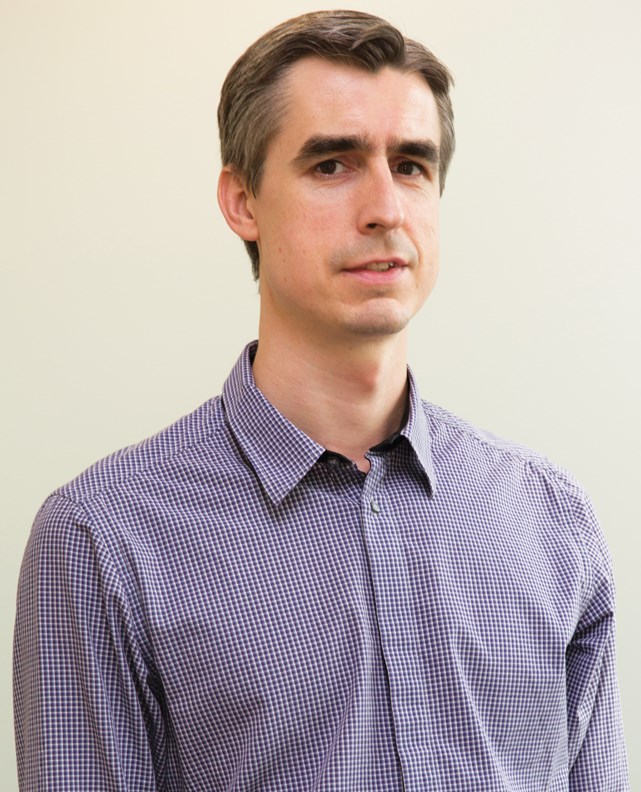An international team led by scientists from the École Polytechnique Fédérale de Lausanne (EPFL) completed the first draft of a computer reconstruction and simulation of a piece of the brain’s neocortex, published on Oct. 8 in the scientific journal Cell. Eilif Muller is one of the lead authors of the study.
Muller lived on the Sunshine Coast with his family when he was a teenager and finished his last two years of high school at Chatelech Secondary.
The computer reconstruction – or simulation – of the neocortex marks a major step forward in the field of brain research, which Muller said is one of the last three frontiers of modern science.
“We know a lot, but we understand very little about what is actually going on in our brain,” Muller said. “These computer simulations help us put the pieces together. It’s an amazing new frontier – it’s considered one of the three frontiers of science. The very far away, the very small and the very complex. The brain is one of the most complex things that we know.”
Since 2011, Muller has managed a team of scientists at the Blue Brain Project of the EPFL in Lausanne, Switzerland. The project was created by neuroscientist Henry Markram in 2005 as a partnership with IBM to use super computers to map out the neocortex of a rat brain. Muller explained that the Blue Brain Project is also a core partner of the Human Brain Project, which is a flagship project of the European Commission launched in 2013 to map out the human brain by 2020.
Muller traced the beginning of his career in science back to his physics teacher at Chatelech, Bruce Fryer, whom Muller said was a strong influence in his early academic life.
“It was him who inspired me to go on the path of science. He’s an amazing teacher, he was very inspirational,” Muller said. “He really put the fire in my belly to study. I left the Coast and went to Simon Fraser University and studied physics.”
The neocortex is the surface layer of brain matter that contains the processes for sight and hearing in mammals. It is considered the most recently evolved part of the brain, but Muller said it’s surprisingly similar across most species of mammals – similar enough that the simulation of a rat’s neocortex can be used to study some diseases that also occur in the human brain.
“The difference in terms of cortical surface area is that we have 1,000 times more neocortical surface area than a rat on our neocortex and we have about 10 times more than a monkey,” Muller said. “Our extra surface is used to represent our higher cognitive functions such as planning, problem solving and language.”
“Being able to build a model like this could have fundamental implications, in particular for the Human Brain Project, which has three pillars of impact. One of the key ones is to be able to simulate and understand brain diseases,” Muller said.
By running tests on the simulation of a rat brain, Muller said the researchers would be able to see the synaptic and electrical processes that occur when a person is afflicted by a brain disease like schizophrenia, bi-polar disorder and even migraines.
“Let’s take the migraine example,” Muller said. “We’d be able to study the pathology in the brain that results in a migraine probably in the next three to four years.
“Migraines can be caused by a genetic disorder. It is thought to be a mutation of some of the genetic code that is responsible for the electrical properties of the neuron. There can be a mutation there that alters how the neurons behave.
“Oftentimes this is fatal, but this is a case where it mutates only so much that a little module of the electrical behaviours of the neuron results in rare but pathological activity happening in the brain at local focal points, then it spreads slowly across the brain.
“So we now have very crisp data on these little modules that are becoming mutated. Then we could actually take these mutated versions, put them into the simulation and observe the onset of a migraine in our simulated microcircuit,” Muller said.
The study began in 2005 and is the result of a massive effort by 82 scientists and engineers at EPFL and at institutions in Israel, Spain, Hungary, the United States, China, Sweden, and the UK.
Idan Segev, a senior author on the study, said their work builds on the pioneering work of Spanish anatomist Ramon y Cajal from more than 100 years ago.
“Ramon y Cajal began drawing every type of neuron in the brain by hand. He even drew in arrows to describe how he thought the information was flowing from one neuron to the next,” Segev said.
“Today, we are doing what Cajal would be doing with the tools of the day – building a digital representation of the neurons and synapses and simulating the flow of information between neurons on supercomputers. Furthermore, the digitization of the tissue allows the data to be preserved and reused for future generations.”
“We’ve been criticized that we’ve really blown up expectations,” Muller said. “People have said that we don’t know enough about the human brain to simulate it, that we’ve promised to cure diseases and so on. We haven’t promised to cure diseases – we’ve promised to study the mechanisms of certain diseases. Sitting where I am and knowing what we do, I really do think it’s possible.”



